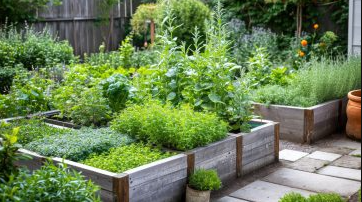Common Mistakes to Avoid When Starting a Raised Bed Garden

Starting a raised bed garden feels like a good idea until your tomatoes stop growing, your lettuce wilts, and you’re knee-deep in soil that refuses to drain. Raised bed gardening sounds simple in theory, but skipping the basics can derail even the most enthusiastic grower. That being said, let’s look at some common mistakes that often sabotage raised bed gardening before the first seed has a chance.
● Choosing the Wrong Location
Sunlight is not optional but essential. A bed parked in partial shade may still look photogenic, but it won’t yield much. Plants like tomatoes, peppers, and cucumbers require at least 6 to 8 hours of sun daily. Skip that, and you’re cultivating frustration.
Also, steer clear of low-lying areas. These spots tend to collect water, and excess moisture leads to root rot. So always try to keep it dry and sunny.
● Using Bad Soil
Not all dirt is equal. Gardeners often dig up soil from the backyard and dump it into raised beds. It’s quick and free. It is also usually packed with clay, compacted, and low on nutrients.
Instead, aim for a loose, rich mix with organic compost, topsoil, and something that helps with drainage, such as coarse sand or perlite. Skip the cheap pre-mixed stuff in sealed bags unless you’re reading the ingredients.
● Ignoring Bed Depth
Root space matters. A shallow bed might look neat, but it puts your plants on a strict diet. Lettuce and herbs might cope, but deeper-rooted vegetables won’t.
Stick to at least 12 inches for most crops. If you are planning on growing carrots or tomatoes, go deeper.
● Skipping Mulch
Don’t let bare soil bake under the sun. A layer of mulch keeps weeds down and moisture in. People often overlook this final touch, then wonder why they’re locked in a constant weed war and dragging out the hose every afternoon.
Use straw, shredded leaves, or even untreated grass clippings. Just don’t pile it on like frosting.
● Overcrowding Your Plants
New gardeners tend to think more is better. Cramming in ten tomato plants might feel productive, but all you’re doing is starving them of airflow and nutrients.
Start with proper spacing. Check the seed packet or tag, then add an extra inch or two just to be safe. Crowding leads to disease, smaller harvests, and, frankly, ugly gardens.
● Forgetting to Plan for Water
Relying on luck or rain is not going to cut it. Raised beds dry out faster than in-ground gardens, so a consistent water source is essential. Dragging a hose across the yard isn’t anyone’s idea of a relaxing hobby.
Consider setting up drip irrigation or soaker hoses early on. It is easier than dealing with stressed-out plants later.
Conclusion
Starting a raised bed garden doesn’t require perfection. Just avoid the obvious traps. Pay attention to your soil, sun, spacing, and watering. Skip the guesswork, and you’ll save yourself the stress of watching sad zucchini flop in July.
- Art
- Causes
- Crafts
- Dance
- Drinks
- Film
- Fitness
- Food
- Trò chơi
- Gardening
- Health
- Trang chủ
- Literature
- Music
- Networking
- Khác
- Party
- Religion
- Shopping
- Sports
- Theater
- Wellness
